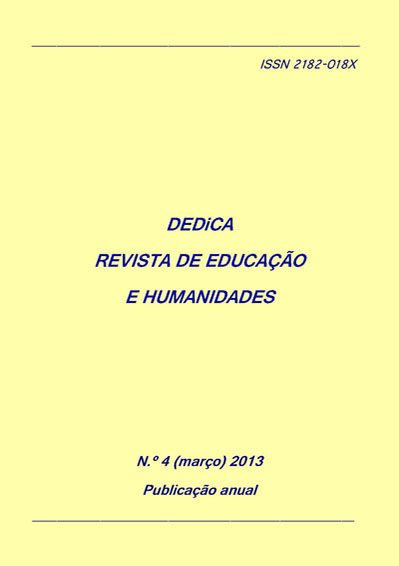Spanish Baroque Sculpture in the Dirigisme of the Seventeenth Century
DOI:
https://doi.org/10.30827/dreh.v0i4.7047Keywords:
theory of arts, aesthetic, Baroque Sculpture, Aristotle, Spain, 17th centuryAbstract
The production of sacred images in wood in the Spain of the seventeenth and eighteenth centuries is not so much a religious phenomenon as a socialization process unique to Modern Europe. It involved the implementation of rhetorical devices announced by Aristotle and defined by later philosophical movements, for educational purposes, generating an unusual imaginary language which had profound repercussions in almost every area of everyday life. Thus, these new objects, created in accordance with the doctrines issued by Trent, played an important role in shaping the motives and socialization spaces of the Baroque age, through the transformation of towns and villages, which now needed to acquire infrastructures and new scenarios in which to launch the newly theorized persuasive mechanisms.Downloads
References
Argan, G. C. (1955). La “Rettorica” e l’arte barocca. En AAVV; E. Castelli (Coord.), Retórica e Barocco. Actas del III Congreso Internacional de Estudios Humanísticos, Venecia, 15-18 junio 1954, 9-14. Roma: Bocca.
Argan, G. C. (2010). La retórica aristotélica y el barroco. El concepto de persuasión como fundamento de la temática figurativa barroca. Anales del Instituto de Investigaciones Estéticas, XXXII, 96 (2010) 111-116.
Aristóteles (2010). Retórica. Edición de A. Bernabé. Madrid: Alianza Editorial.
Aristóteles (2002). Poética. Edición de A. López Eire. Madrid: Istmo.
Concilio de Trento (1787). El sacrosanto y ecuménico Concilio de Trento, traducido al idioma castellano por Don Ignacio López de Ayala. Agrégase el texto latino corregido según la edición auténtica de Roma publicada en 1564. Tercera edición, Madrid, Imprenta Real, 1787. (Sesión XXV. Quae est IX. Et ultima sub Pio IV. Pont. Max. Coepta die III. Absoluta die IV. Decembris M.D.L.X. III. De invocatione, veneratione, et reliquiis Sanctorum, et sacris imaginibus). Consultado en: 17/08/2011. Disponible en:http://sapiens.ya.com/jrcuadra/trento.htm
Fumaroli, M. (1994). La scuola del silenzio. Il senso delle immagini nel XVII secolo. Milano (1995): Adelphi edizioni.
Fumaroli, M. (2010). París-Nueva York-París. Viaje al mundo de las artes y de las imágenes. Barcelona: Muntaner.
Furió, V. (2000). Sociología del arte. Madrid: Cátedra.
Gubern, R. (1999). Del bisonte a la realidad virtual. La escena y el laberinto. Barcelona: Anagrama.
Henares Cuéllar, I. (2009). Estética y modernidad artística en el Barroco. A propósito del arte procesional. En J. M. Parrado del
Olmo; F. Gutiérrez Baños (Coord.). Estudios de historia del arte: homenaje al profesor de la Plaza Santiago, 101-106. Valladolid: Universidad.
Maravall, J. A. (1980). Cultura del Barroco. Madrid: Ariel.
Morpurgo Tagliabue, G. (1955). Aristotelismo e Barocco. En AAVV.; E. Castelli (Coord.), Retórica e Barocco. Actas del III Congreso Internacional de Estudios Humanísticos, Venecia, 15-18 junio 1954, 119-196. Roma: Bocca.
Pacheco, F. (1990). El arte de la pintura. Ed. de B. Baseggoda i Hugas. Madrid: Cátedra.
Orozco Pardo, J. L. (1985). Christianópolis: Urbanismo y Contrarreforma en la Granada del seiscientos. Granada: Diputación.
Tapié, V. L. (1978). Barroco y Clasicismo. Madrid: Cátedra.












